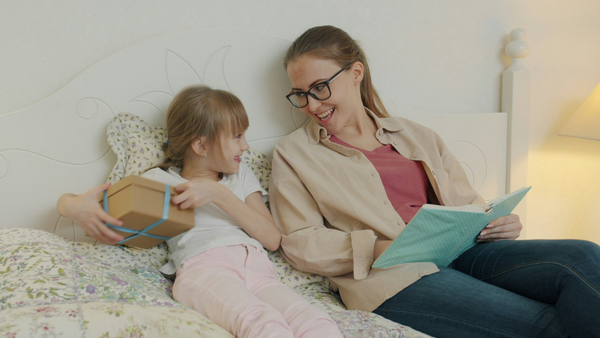By: Rose Lauren, Bened Life Neurodiversity & Disability Specialist
Now that you’ve used Part 1 of this guide to prep for travel, you are ready to go!
In this post, you will find steps for the day of your travel, including packing tips and how to deal with the potential stressors of the airport.
What to Pack in Your Hand Luggage

Let’s look at a key guide for what to bring in your carry-on for the duration of the journey.
Check out exactly how I prepared my bag before my last trip here!
My Hand Luggage Necessities
These are the items I make sure to have packed in my carry-on bag:
- Phone charger and travel adapter
- Passport* and/or other IDs
- Money in the appropriate currency*
- Travel information, boarding information, and visa*
- Phone
- List of emergency contacts, hotel information, and phone numbers/addresses
- PENGUIN! (My comfort toy and neck pillow. He is a good sensory comfort for me and very cuddly and small enough to fit!)
- Medications, spares, doctors’ permissions, and a list of my medications
- Health insurance policy*
- Stim toys, noise-canceling headphones, sunglasses, and a hand fan
- A jacket or light shawl if the plane is cold
- Gum or sweets for takeoff and landing
- A book
- Spare cash
- Spare underwear
- Tissues
- Hand sanitizer
- A card that says your needs, autism or alike, to hand to someone if you are struggling to speak or non-speaking*
- Wallet
- An empty water bottle for once you pass security (you will have to empty any filled water bottles before security otherwise)
- Any other things you may feel are appropriate for flying and meet the criteria allowed on the airline’s guidelines
*(if needed)

How to Manage the Airport
After all that, I would say you’re more than prepared for the big step. What I find most triggering is the initial airport “dash:” the feeling of chaos that can overwhelm you as you attempt to move from the doors of the airport to your seat on the plane.
Arriving at the airport (or train station) can be so overwhelming. I’m covering airports here, but if you’re taking a bus or a train, you can call the company and ask them to explain the train or bus station(s) ahead of time. Or you can have someone accompany you to the train/bus station.
Arriving at the Airport
Always arrive at the airport at LEAST two hours ahead of your boarding time, if not more. There are things to do after all the security checks, so if you have loads of time you will be ok. This will be way better than any stress caused by being there later.
When you arrive at the airport, there are a lot of signs and lights everywhere. There are noises coming from every direction and people rush past you, not aware they’ve maybe knocked you half over. It is not usually a calm environment.
The first thing I do is stand outside and collect myself and only enter when I’m ready. I make sure all my bags are closed, check again for my passport and documents, and walk through the doors. I slowly find the signs that point either to the disability desk (where I’ve called ahead for assistance) or the correct airline desk to check in my bag.
The Special Assistance Desk
At the special assistance desk, I am usually met with a representative who helps me check in, drop bags, and provides me with a wheelchair to the disability access security line. Here, I usually don my ear defenders and hand over my documents to them or the person I’m traveling with.
If you’re not using disability assistance, it’s a little trickier, but you got this! First, find a screen that says “Departures.” There, find your flight number with the right departure time, it will say where your check-in desk is. There are also usually signs for this. If you have no bags to check, you can simply use the boarding pass you’ve printed or have on your phone and head to security using the signs.
At your check-in desk, you may have to queue, so prepare to use your ear defenders and any stim distractions you have. Once at the desk, hand over your boarding information and passport. They will weigh your bag and off it will go to the plane! One less thing to carry! They will check you in and send you off to security.

Checking Through Security
Unfortunately, this isn’t the part where you pass go and collect $200, but you are on a roll!
You’ll proceed to security, where you’ll either join a queue or be guided through by your disability assistance person. At worst, the queue is long and noisy (think McDonald's but with added beeping and more humans). Earphones back on and distraction stims engaged.
You may be asked to remove jewelry, electronic items from your bag, your clear bag with liquids, and maybe even your shoes! Once through the scanner, you can collect these items.
Your bag might get an extra check; a representative will call you over, and you must let them search your stuff and follow their instructions. If they want to remove something, this will be because it’s the law. They will check if there is anything that doesn’t pass their guidelines. If there is, they will remove it and throw it away. If not, your bag will be repacked and you’ll continue on your way.
Getting to Your Gate
The next challenge is navigating the signs to your gate. If you are alone, find a screen. This will have your departure and boarding time, as well as your gate. But before you get to the gate, there is a sensory maze challenge set out to entice people into buying things ahead of the flight.
I suggest you put your headphones back on, look at the path ahead of you, and power through. There are scents all over from duty-free perfumes and salespeople might try to stop you, but keep your gaze ahead and once you make it through, you can continue on to the gate. This may include a long walk, but you can stop to use a toilet or buy a coffee to break up the walk.
Eventually, you will reach your gate. If you haven’t been with a disability guide, you will board the plane with everyone else when your ticket group is called (this is listed on your ticket). When they call your group, you can join the queue of boarding passengers, hand your passport and ticket over, and board the plane! If they ask you to check your carry-on, as sometimes happens with very full flights, explain that your medication must remain with you so, no, it’s not possible. You can disclose your autism if you feel comfortable doing so.
On the Plane
When you reach the plane, you will find your seat and either place your bag in the bins above your head or in front of you under the seat.
Once everyone is boarded, the flight crew will begin announcements. This can be quite overwhelming, so if you prefer, read the instructions that are in front of you or on the card placed in front of you. If you have any concerns, just ask a flight attendant. Otherwise, preoccupy yourself as you wish for the duration of the flight. Then, it will be time to land.
Once you’ve landed, everyone will rush to leave, but don’t be afraid to wait until the very last passengers are off so you don’t feel rushed or stressed by those around you.
If you are alone and haven’t arranged airport assistance on landing, then this is what will happen. You will leave the plane and follow the signs to your next flight or to the airport exit. You will see signs for baggage claim or passport control if traveling internationally. You will need to join this queue, and once instructed, provide your passport and answer any questions they may ask. From there, you’ll collect any checked bags you have. Find a screen to locate your flight and see which number baggage claim is yours. This can take some time, and I get increasingly nervous/anxious if mine doesn’t appear right away. Your bag should show up and then you can grab it. You’re almost there!
Getting to Your Hotel
Time to leave the airport and get to your final destination! Don’t be afraid to ask for help to find the pick-up area. Or, you can walk to the taxi sign and use the airport-designated taxis to your hotel or place of stay. Ignore anyone offering you a taxi outside of this official location.
If you’re using a rideshare app like Uber, the pick-up area may be different from the taxi area. Just check with an airport official.
Once at the hotel, you can check in, get into your room, lay on that bed, and breathe out a huge, proud, and relieving release. The journey is over! Let someone back home know you are safe and sound.
Now take time to adjust. Maybe unpack. Make yourself comfortable and be so proud because absolutely no one finds travel easy or completely stress-free. The aftercare once you arrive at your destination is key: hydrating, eating, resting, adjusting, and then, most importantly, enjoying your stay!
You’ve Got This!
I know travel can seem a lot the first few times around. But with all this information, you will be more than prepared. I remind you to take many moments to check in with yourself, hydrate, check for toilets, take deep breaths, and try to enjoy the process and feel the excitement that can come from getting away!
You deserve these opportunities, and I hope this detailed guide has given you the insight and tools needed to make that feel achievable.
You got this! R x (And penguin!)







